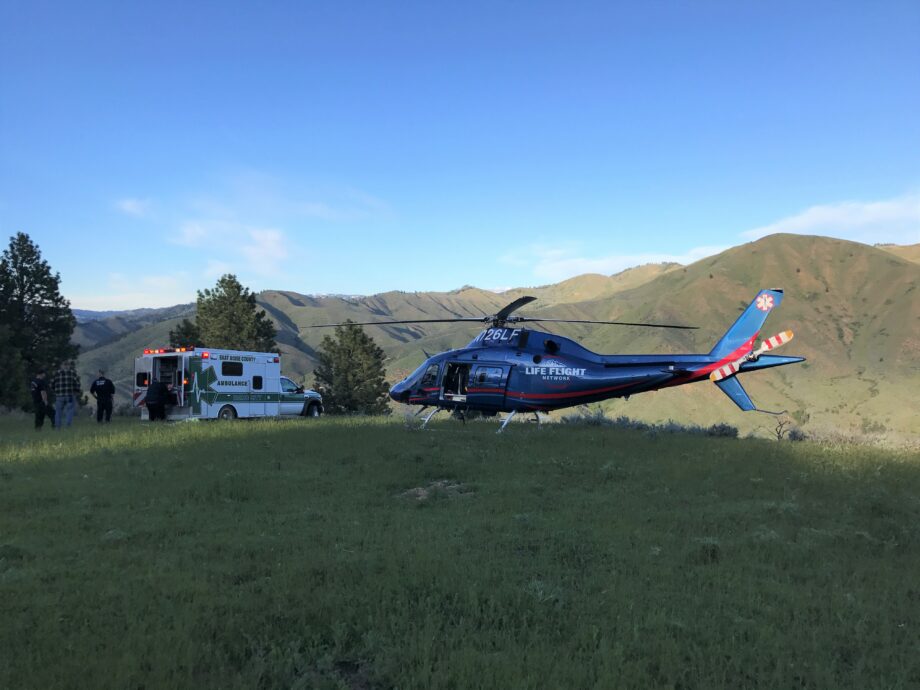A short 22 miles southwest of Clarkston, Wash., sits the rural community of Cloverland. One afternoon Clint Heuett and his father, Mark Heuett, spent the day clearing brush and small trees on their property. Clint operated a wheel tractor, while Mark plucked spindly Tamarack from the ground with an excavator.
Shortly after lunch, Mark locked into a tree for unearthing, but it snapped and broke loose; Mark tried to catch it but its projection gained force and speed, he stated, “The tree was small in diameter, maybe three inches, but long.” At that moment, Clint was pulling away and did not see the tree coming at the back of his head. Mark added, “it built momentum and connected with substantial force.”
Mark rushed to disengage the tractor and dialed 911, requesting that local emergency response services contact Life Flight Network. “There was no blood, his skin was not even broken, but he was struggling and began throwing up profusely,” said Mark. He knew his son had been hit severely and this was a time-sensitive emergency that required a critical care transport team.
The helicopter arrived with the Life Flight Network clinical team, flight nurse Ella-Mae Keatts and flight paramedic Zach Greenfield, joining Lewiston Fire Department crewmembers. Keatts and Greenfield recall, “We ran through a field and crossed a fence to reach Clint, while the pilot, Dean (Leasure), looked for a closer landing area.” Immediately, Ella-Mae recognized Clint from the airshow held at the Lewiston Airport the previous day, where she visited with him, “we discussed the new hangar while he toured the inside of the helicopter.” Now, Clint was responding to questions and commands intermittently and they quickly readied him for transport to the nearest trauma center, St. Joseph Regional Medical Center (SJRMC), a seven-minute flight.
For 28 days, Clint remained in the Intensive Care Unit at SJRMC. Mark recalls those days, “Clint’s neurosurgeons, Drs. Solonuik and Hill, and the internists, Drs. Dir and Green, were outstanding; not only did they show skill beyond our expectations, they exhibited care and compassion for Clint and for us.” He adds, “Clint’s mother, Debbie, and I were told his condition was critical and his injuries extreme; we tried to prepare for the worst.”
But, preparations weren’t necessary, it turns out Clint needed only a great deal of quality care. Mark stated, “The nurses were present 24 hours-a-day and this deserves credit.” Mark added that Life Flight Network Flight Nurse Ella-Mae Keatts and Flight Paramedic Zach Greenfield stopped in several times to check on Clint.
Clint has come a long way since that September day. His road to recovery wasn’t an easy one and rehabilitation therapy at Northern Idaho Advanced Care Hospital proved to be a challenging chapter filled with relearning many of the basic functions often taken for granted. Mark remembers the day Clint smiled for the first time well over one month after the accident, he said, “my best friend, Lenny Frasure, asked Clint for a smile, and to our surprise he gave us one, small at first, but there.”
